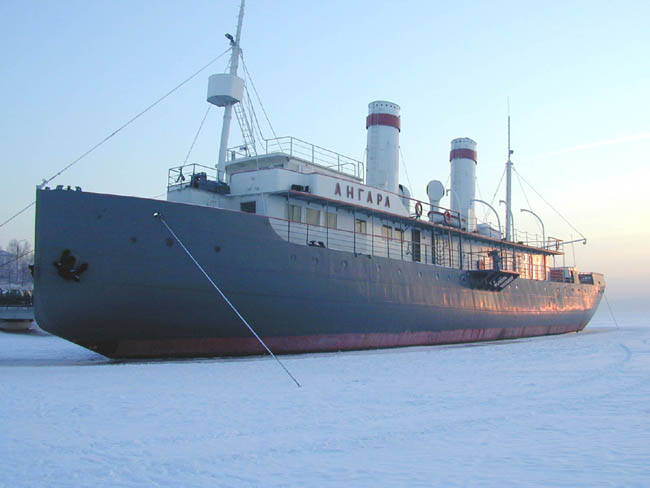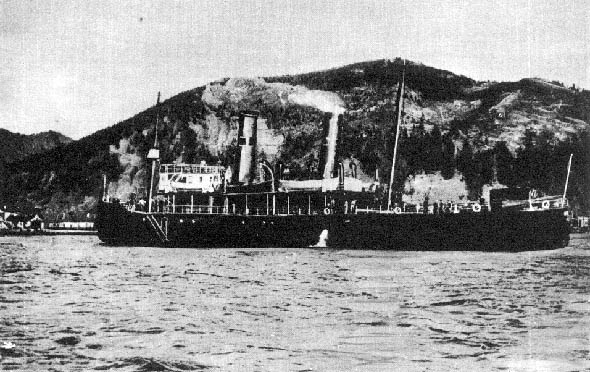Icebreaker Angara

Icebreaker Angara in winter, Copyright © I. Bulygin

Tip! The Icebreaker Angara museum is a recommended place to visit. Open on working days from 10:00 to 17:00 (10:00 a.m. to 5:00 p.m.). Take trolley or bus to Mikrorayon Solnechny.
The first icebreaker at Lake Baikal was ordered as a shuttle ferry for railway carriages, a "swimming bridge", to connect the Trans-Siberian Railroad across Lake Baikal, where tracks approached from the west and from the southeast. The committee in charge of building the Trans-Siberian Railroad decided to order the first icebreaker (later called Baikal) on November 29, 1895. The committee contracted with Sir V.G. Armstrong and Co. of Newcastle, Britain, for 79,890 British Pounds. The icebreaker was transported from Britain in sections, traveling by ship and by horse, and was assembled in Listvyanka in 1898-99. Emperor of Russia Nikolai II issued a decree naming the ship Baikal. The Emperor refused to call it Nikolai in his own honour, as was initially proposed by the Ministry of Transport.
While Baikal was being transported in parts from Britain, the committee decided to order another smaller icebreaker, which would be named Angara, for transporting goods and passangers on the same route. The parts of this new icebreaker were shipped from Britain to Revel (now Tallinn), and then went by the Trans-Siberian Railroad to the shore of Baikal. It was assembled and first touched the water on July 25, 1900.
Angara shuttled between Port Baikal and Mysovaya twice a day until the Circumbaikal Railway was finished in 1905. In 1918 Angara was refitted for transportation of passengers. During the civil war the icebreaker was supplied with canons and was ordered to guard Listvyanka.

Angara continued to transport goods and passengers until 1962. After that, it was docked in Port Baikal and later in Irkutsk. While docked, it has been swamped several times. In fact, it might be able to get into the Guiness Book of World Records as "the icebreaker that has descended to the sea bottom the most times.".
Angara was refurbished in 1989 by the donations of private individuals and organizations. Now it is a floating museum.
The museum's displays include:
Copyright © WWW Irkutsk 1995-2001